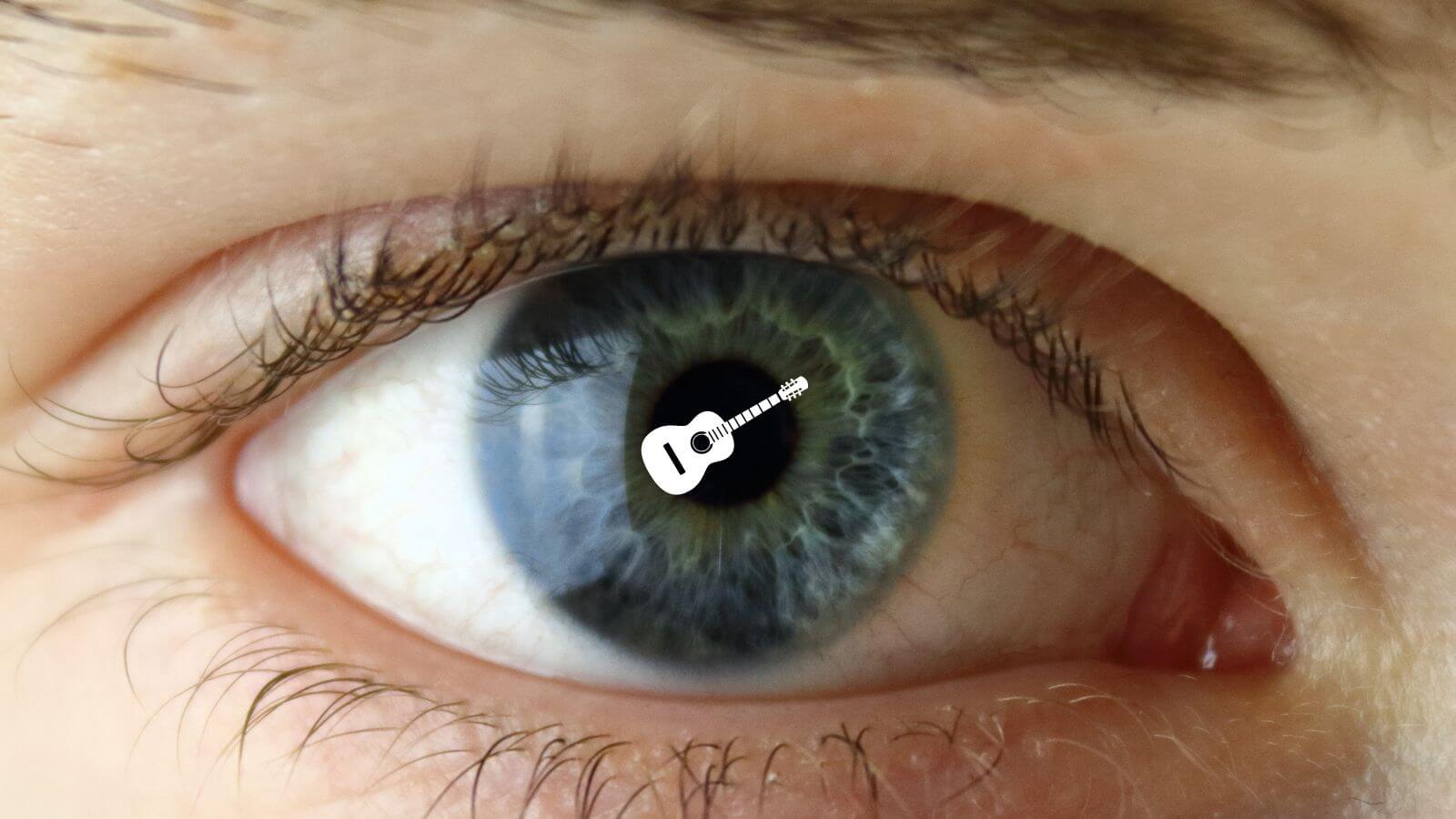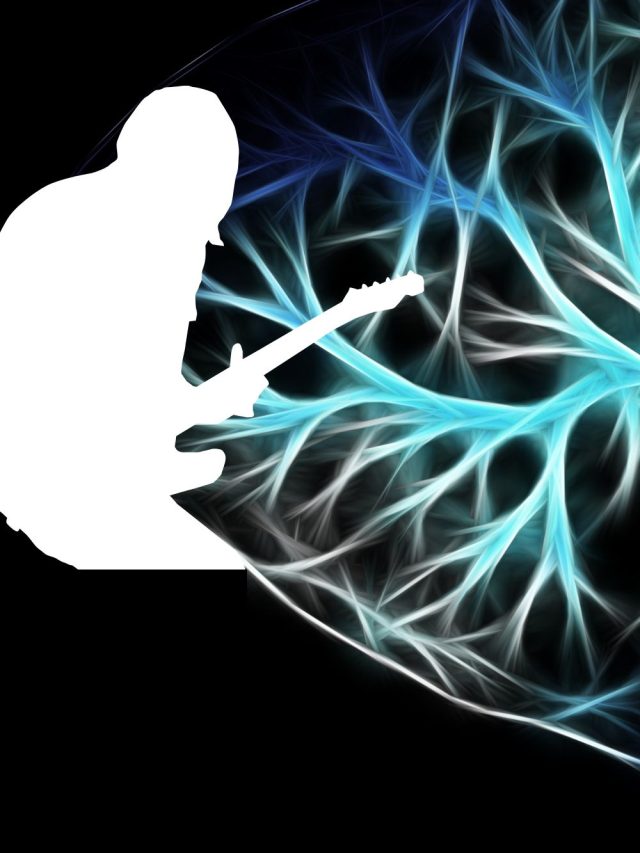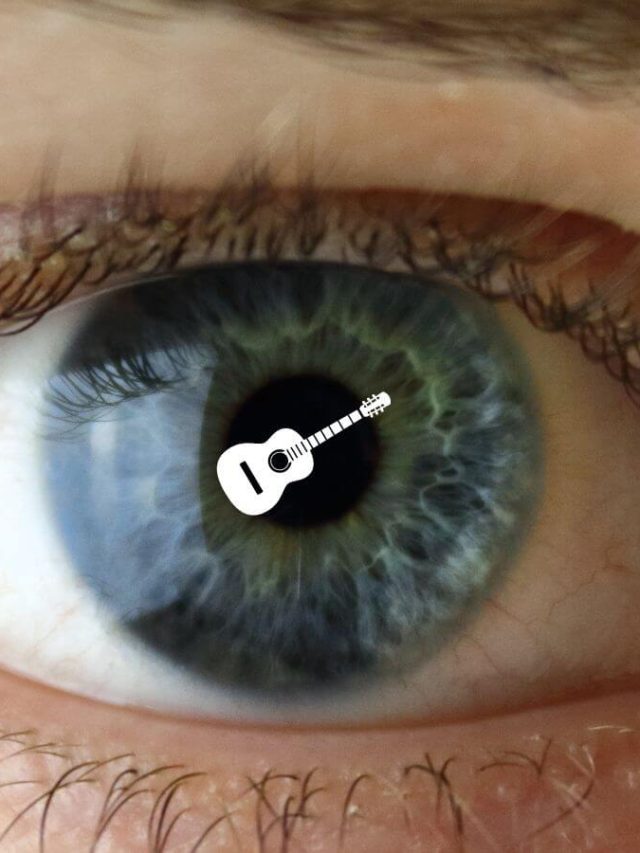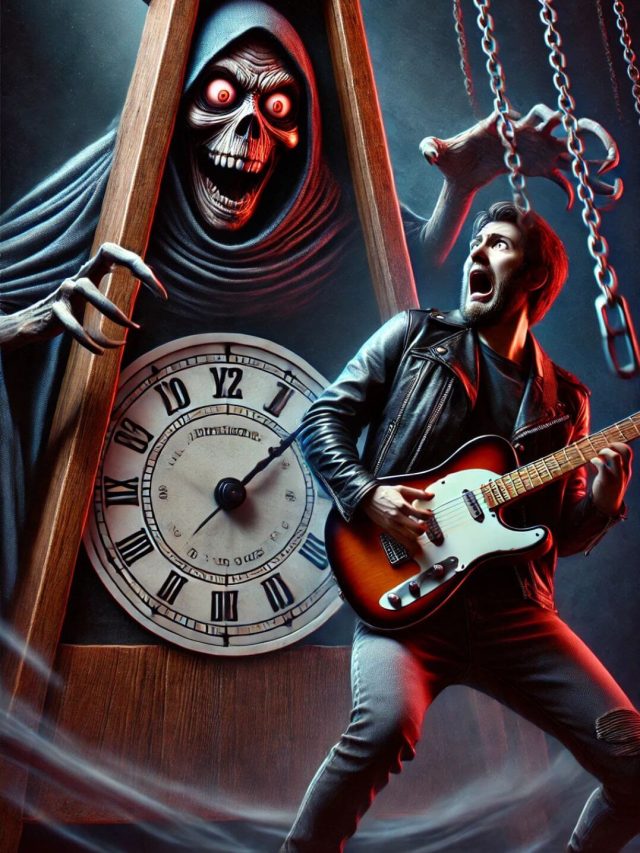Visualization is a way to perceive using your mind’s eye and visualizations tend to help people improve their skill performance.
Visualizations help musicians[1] and sportspeople[2] perform better, and can also help others overcome fears[3] like stage fright and lower performance anxiety. It is a technique to improve most perceptual-motor skills – skills that need your brain to actively perceive and move parts of your body in sync.
What are musical visualizations?
Let’s backtrack. Visualization is a part of mental imagery, specifically, imagery that takes the form of visual details. You can have auditory imagery too, which is hearing with your mind’s ear. But for the sake of simplicity, people call all forms of imagery visualizations or imagination. Example – Just imagine yourself playing it and you can play it.
Think of visualizations as mental practice[4]. It is symbolically rehearsing your skill in the absence of accurate physical movements[5]. Slight air guitaring is fine, but then the more you move, the more it is “embodied” and not “symbolic”.
How effective are visualizations?
In Alan Richardson’s 2 part review (part 1[6], part 2[7]) of mental practice research and related performance gains, there is an interesting finding summarized through 30 years of research. Across a wide variety of perceptual-motor tasks like darting, basketball, juggling, finger movements, card sorting, finger dexterity, tapping, etc., physical practice has the highest improvement in skill as expected. But mental practice gives a far higher performance gain than no practice, and is sometimes almost equal to physical practice. In some cases, no practice led to 10% improvement but mental practice gave over 60% improvement and physical practice gave a maximum of 450% improvement across many studies. Alan’s research does highlight some studies where visualizations repeatedly worsened performance, and he suggests that visualizing endlessly (called massed visualization) interferes with actual performance. To prevent this, visualizations need to have accurate details.
A quick review gives us these 2 formulae about how good mental and physical practice are for improving skills.
Physical practice (PP), No practice (NP), Mental practice (MP).
- PP > MP > NP Physical practice is greater than mental practice which is greater than no practice.
- PP = 2MP = 10NP In short, physical practice is 10 times better than no practice, and mental practice is 5 times better than no practice. And mental practice is half as good as physical practice.
Alan’s research says a few other things too that have direct conclusions for a guitarist.
- Visualizations can lead to bilateral transfer. Bilateral transfer means skills acquired by one hand apply to the other hand.
- Visualizations are also more efficient and more potent when a learner is familiar with the visualized material. So you should visualize something you are currently learning and not just fantasize about something you wish to play one day.
- Visualizations should typically last for just a few minutes, otherwise, you would lose focus and the visualizations would interfere with your physical skill. On top of that, over-visualization can actually lead to habituation and neural numbing via a process called “reactive inhibition” – if you overplay a neuron (through visualization or physical practice), it becomes less (not more) sensitive and reduces its firing rate.
- Detailed and accurate visualizations improve performance more.
When you learn something, the brain encodes it. Encoding means it is converting sensory information into a learning pattern that is stored as a memory in the brain. All techniques and sound patterns you learn are encoded memories and are governed by the brain’s motor cortex and somatosensory cortex.
The process of encoding is not straightforward. It is lengthy and extremely unstable because the neurons that encode the memory have to themselves biologically stabilize. And unless you actively let the brain stabilize them, they will decay. We call this process of stabilizing neurons “learning”.
Interrupted sleep, or learning too many things without any practice, or giving your practice very little importance translates into the brain not using its resources to stabilize those neurons. Practice is the most common way to stabilize them, but physical practice is not. That’s where visualizations play a role.
There is neural replay after a newly learned guitar part. First, the brain converts your sensory information into memory (encoding) in the form of neural activity. This activity is replayed by the brain to strengthen it. Instead of just letting the brain replay it on its own, you visualize and let the brain replay those neurons. Research regularly shows that imagining something engages similar or a part of the same neural activity as physically doing something. So imagining yourself playing a riff will engage neurons that are actually used while playing that riff.
Visualizing yourself playing an instrument can improve skills because the brain then rehearses the neural connections and signals muscles to make movements. Research suggests it’s half as good as actual practice in some cases.
How to visualize
First, keep your eyes closed or open based on your comfort with visualizations and how vividly you feel guitar movements.
There are 4 ways you can visualize, and each of them has a different role to play in your performance.
- Egocentric visualization: Egocentric means self (ego) centric, where you visualize yourself play from your 1st person point of view. This way of visualization brings details and precise technical aspects, including the sounds into awareness and your brain encodes those better.
- 3rd-person allocentric visualization: Allocentric means other (allo) centric, where you visualize yourself playing from a 3rd-person point of view. 3rd person allocentric view gives you confidence and a general sense of feel, and the brain encodes that.
- Low construal visualization: Construal means depth of understanding. Low construal means very high details, like a mental close-up view. Low construal detail allows you to encode your mistakes and analyze your ideas. High construal is a big-picture view, so it is better done as allocentric or egocentric visualization.
- Positive visualizations: Positive visualization is about imaging a better skill level or overcoming a fear in the absence of real threats. So if you are a musician with stage fright or have low confidence in performing well, visualize yourself doing better. It’ll set you up for actual better performance.
The first 3 of these visualizations also follow the time dimension. You can visualize in slow motion, high speed, and actual speed.
Consider your attention, what does it actually do? Attention filters information and selects information to process meaningfully.
All 3 visualizations and all 3 tempos change what your attention brings into focus.
Slow motion gives you clear access to details. High speed gives you a big-picture view. Actual speed gives you a confirmation of what you know. I recommend being able to visualize at all 3 speeds with all visualizations.
Your visualizations should have a goal. Ideally, this mental practice is practice; it is to get more accurate and comfortable with your physical skills.
How visualization improves learning and motivation
If you haven’t learned, can you still visualize? Yes. There is a simple reason – while learning, if you know how something should sound, trust that the brain has perceived it better than your fingers can reproduce it. Since visualizations are symbolic, there is no physical demand on the body. You have the mental capacity to think symbolically and use your visualization as a “target” or “goal” for your physical practice.
Where exactly are these mental practice performance gains coming from? Answering this question is hard, and we explored encoding and neural replay. But there is more.[8] Current studies suggest a number of possibilities[9]:
- Mental rehearsal aka visualization creates extra motivation due to familiarity with the learning task.
- While learning, when memory is encoded, mental training improves connections between symbols and neural representation of the thing first learned.
- Rehearsing mentally improves memory for what is to be done for good performance, so it is easily used on purpose after many mental rehearsals.
- When imagining a movement, the physical muscles receive an “action current,” which is a neural impulse to start the movement. Other brain regions then stop that current and prevent complete movement. However, in most cases of visualization, there are minor body movements. These action currents put muscles in a ready state called “priming”. Experiencing the impulse makes it easier to perform a muscle procedure like finger movements at a later stage. Even without priming, you can anticipate future movements faster if you already know how they should go and are now familiar with them through mental practice.
- Body movements like swaying, tapping, head movement, air-guitar, etc., during visualization improve learning because body movements add an extra reinforcement layer to learning. When the body is involved, learning is encoded at a deeper level. So it is like a small fraction of actual learning with deeper sensory learning. Music is itself considered embodied – the body is inherently involved in musical processing (outside the brain). So body movements facilitate musical learning at a deeper level which strengthens musical and motor/fine-motor memory.
- There is a continuous feedback between the body and the brain, so visualizing initiates that feedback and rehearses the mental and physical components by just activating one. This is more pronounced when visualizations are vivid and accurate.
- There is lesser muscle fatigue through intense practice so performance doesn’t improve but a drop in performance is better managed.
- Because there is actual learning and an increase in motivation through mental rehearsals, there is lesser uncertainty about the “feeling” of performing. So this increases confidence.
Takeaway
Visualizations lead to actual learning. They are economical and do not induce muscle fatigue. Mental practice works really well for perceptual-motor tasks like playing a stringed instrument. Use visualizations to process details and continue the brain’s learning mechanisms while you aren’t physically practicing.
References
[2]: https://digital.library.txstate.edu/handle/10877/5548
[3]: https://www.ingentaconnect.com/content/scimed/mppa/2010/00000025/00000004/art00002
[4]: https://www.tandfonline.com/doi/abs/10.1080/00221309.1995.9921245
[5]: https://www.tandfonline.com/doi/abs/10.1080/10671188.1967.10614808?src=recsys
[6]: https://www.tandfonline.com/doi/abs/10.1080/10671188.1967.10614808?src=recsys
[7]: https://www.tandfonline.com/doi/abs/10.1080/10671188.1967.10613388?src=recsys
[8]: https://www.tandfonline.com/doi/abs/10.1080/10671188.1967.10613388?src=recsys
[9]: https://www.tandfonline.com/doi/abs/10.1080/10671188.1967.10613388?src=recsys










